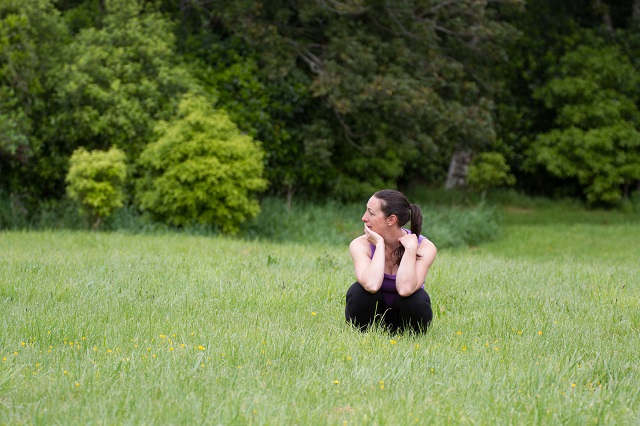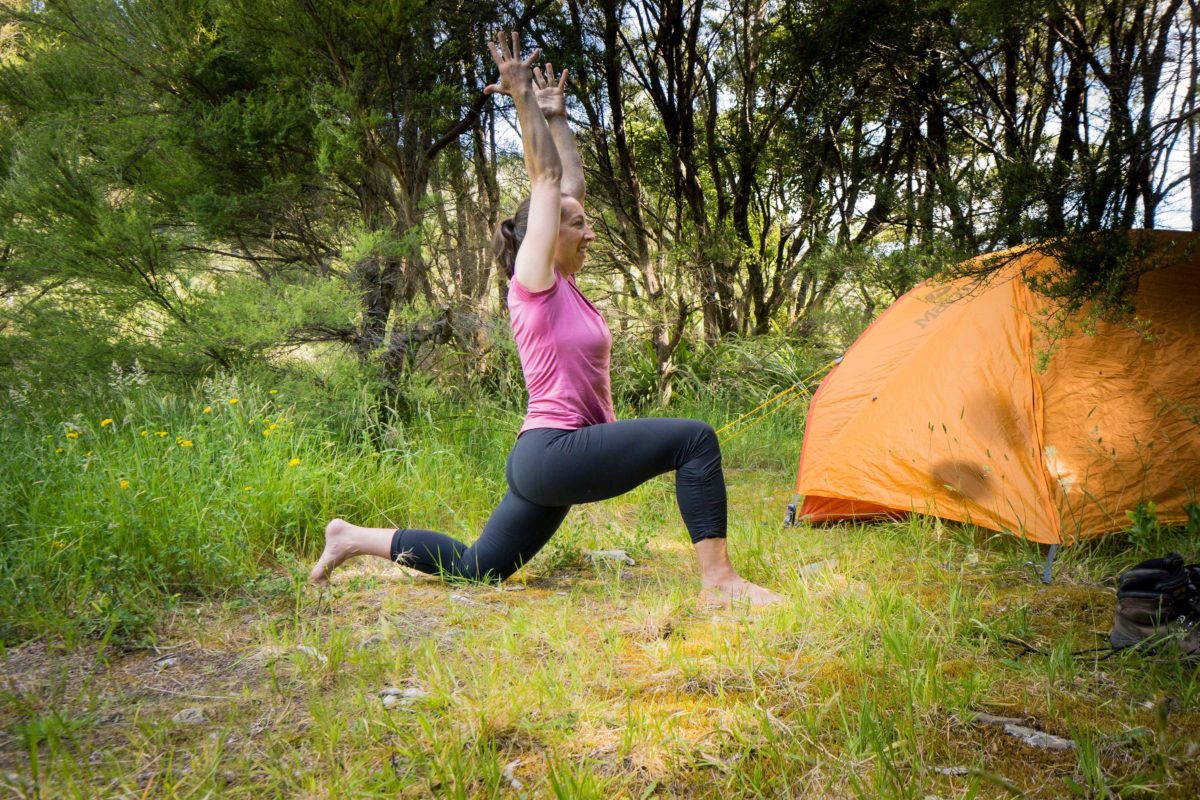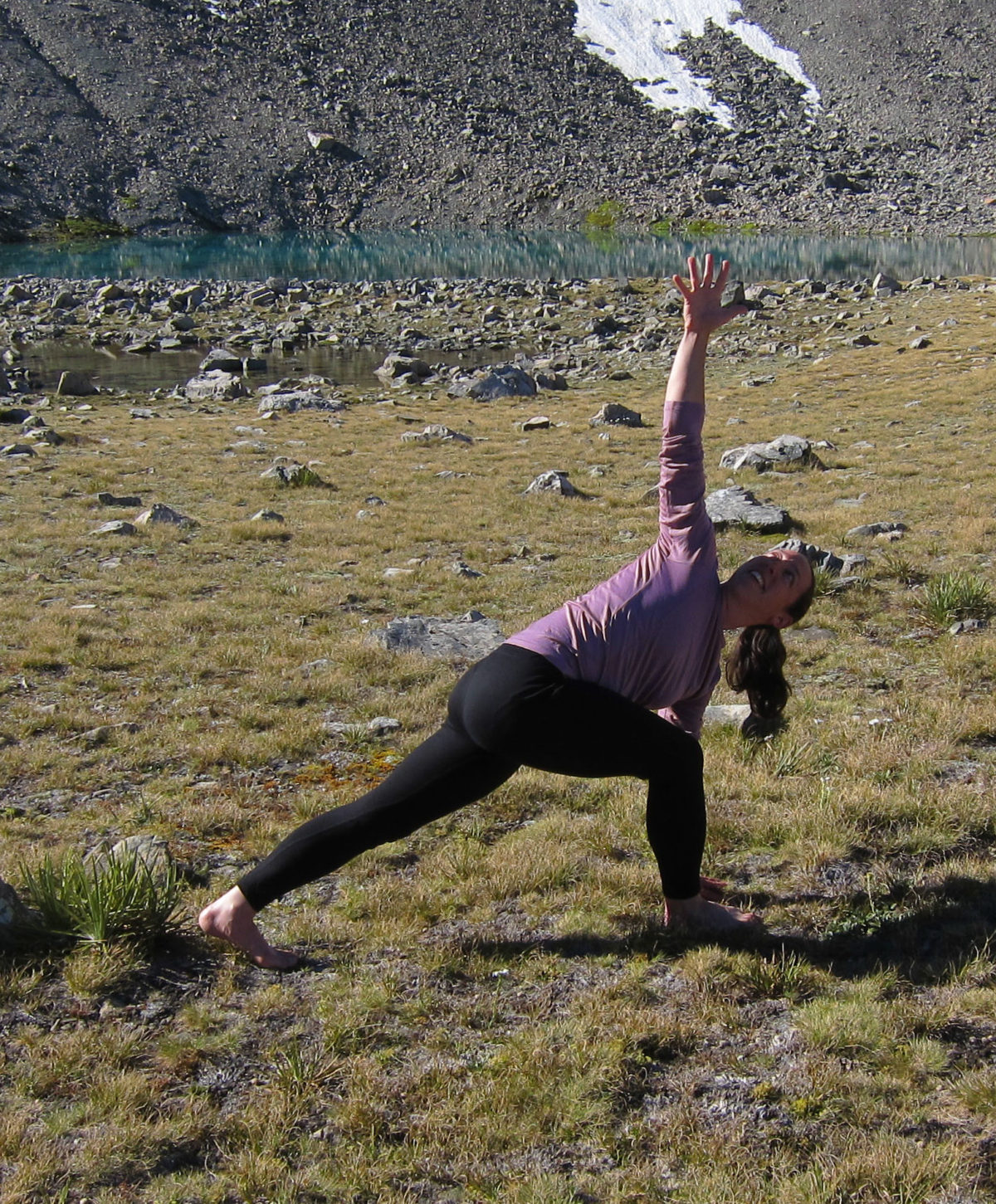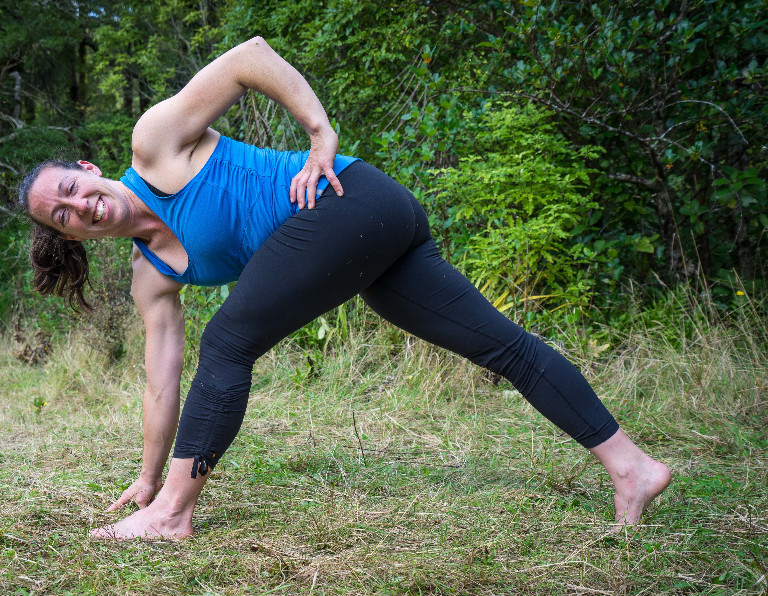Spending a few weeks in a new city has meant that I could try out yoga classes from teachers that were new to me. Trying out new classes with unfamiliar teachers made me reflect on how it important it is to think about and do what is right for me personally. And specifically in group classes where everyone follows along often without time or space for questions, it’s important to feel like you can say no, not do something or do something differently.
In one class I tried, we were guided into certain physical movements that aren’t ideal for my dodgy hypermobile (far too flexible) hips. We repeated a style of lunge several times. As the repetitions increased, I could feel increasing twinges in my left hip. So I progressively altered the lunge to better suit healthy movement patterns for my body. We did that style of lunge about 8 times and I was bit nervous ignoring the cues from the teacher, doing the direct opposite of her request. I wondered, and a little bit nervously waited to see, if she would publicly ask me to change or worse, come over and adjust my body physically without asking first. Fortunately she didn’t, instead respecting I was new to her class and it was best to let me move in a way that was right for me.
As we neared the end of the class, she guided us into pigeon pose/eka pada rajakapotasana (my least favourite pose and most risky position for my hip). We stayed in that pose for minutes. I could have moved my body into a different position, but instead I put a prop under my bum. I didn’t want to overtly contradict her request by doing something completely different. She remembered on the second side to offer an alternative position, but by then it felt too late. As I sat in the pose, I thought about how hard it is to say ‘no’ in a group yoga class, or rather to not comply with the verbal directions and cues of the instructors.

I thought about how I’ve been practicing yoga for 20 years, teaching for 8 years and I am fiercely protective of my body as it has grown more vulnerable to injuries from previous injuries, age and general life use. I know the things my body shouldn’t do, and how to adapt for me. And I thought about how, even with all that under my belt, I had found it hard to do something other than what the teacher had requested. I didn’t want her to think I didn’t understand or that I was disrespectful, or worse draw the attention of the whole class to me – that one person not doing what everyone else is doing.
This isn’t to blame the teacher or the options she was offering. And to be fair, I arrived only minutes before the class started, and the lack of time meant I forgot to mention my dodgy hip to the teacher when I arrived. Possibly my rushed arrival was why she didn’t ask about any injuries or health issues. There are many things we can do as teachers to make an experience safer and more welcoming/adaptable to people. But that’s not the focus of this post.
The focus is about your rights and responsibilities as a student/client/participant/practitioner/follower. First, it is Ok to say no in yoga or to simply not do what is requested, or to do something different than what is requested. And that applies not just to physical movements, but also breathing and meditation practices.
Second, it is our responsibility to say no, change or not do. It’s not fair or effective to just hand over responsibility for safety and wellbeing to another person, simply because they are teacher. Being a teacher or instructor does not mean being an expert of other people’s bodies. It means having expert knowledge and advice to offer, but the ultimate expert of your body, is you. The best way to gain the benefits from yoga is combining the expert knowledge of the teacher with your expert knowledge of your body. That’s a partnership that relies on communication. It would been ideal if I had arrived early and talked with the teacher about my dodgy hip. But even if you miss the moment at the start, have the conversation after class. Let them know why you did something different and that you appreciated being able to do what was right for you.
A little yoga philosophy…
I’m reminded of ahimsa. Ahimsa is a one of the five yamas (ethical or moral rules) from Patañjali’s Yoga Sūtras. It is a Sanskrit word often translated as non-violence. There are of course many applications of non-violence in life and society. But in this small example, choosing not to do something that would not be Ok for my body is a small way of praticing ahimsa – being non-violent or non-harming towards my body. And that has a flow on effect. If I had followed all the cues offered without adapting, I would have ended up with pain in my hip, and chances are I would have been frustrated and angry, and I might have directed that anger at myself or even at the teacher. So making the right choice for me meant non-violence towards myself and the teacher.




